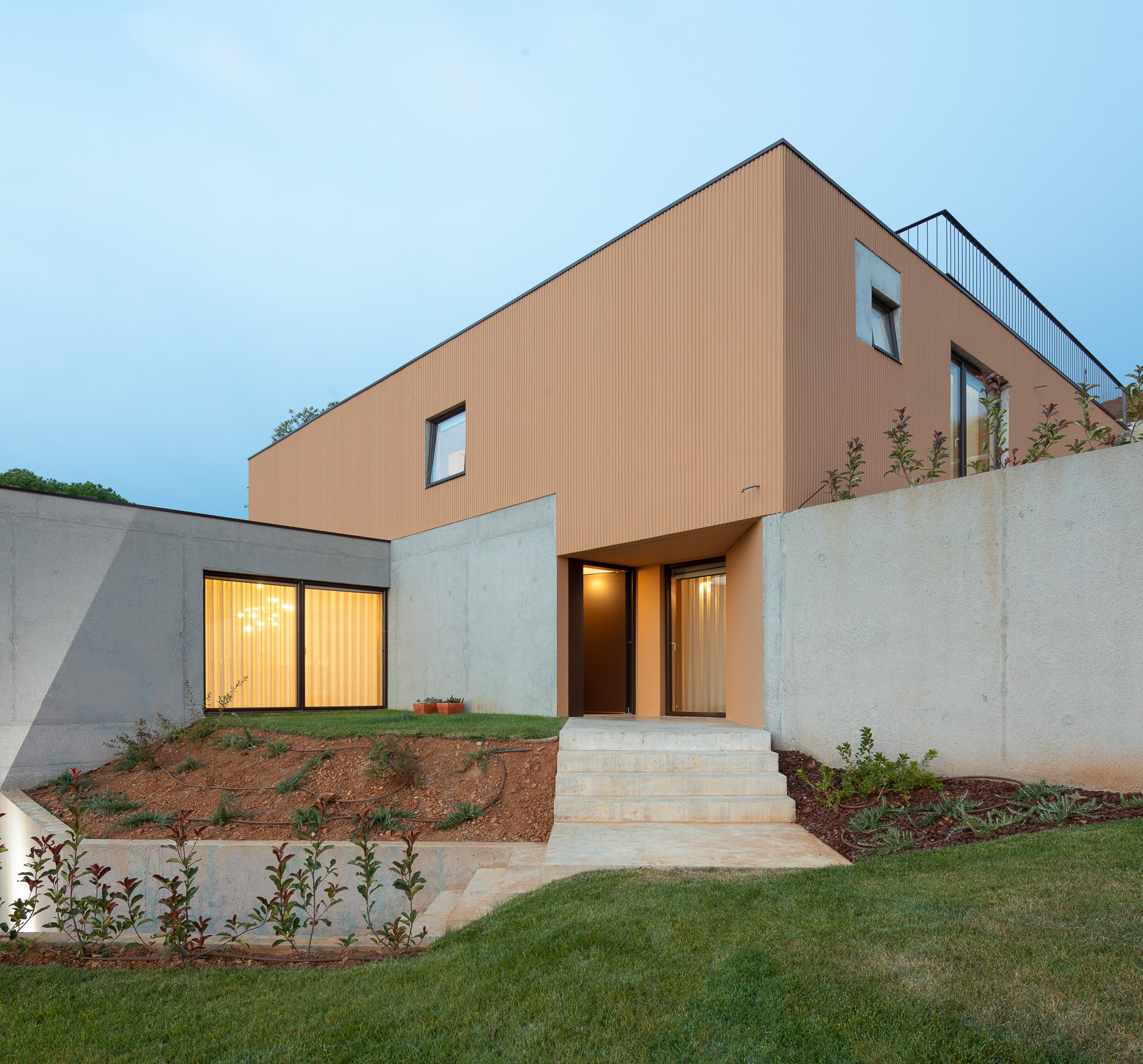HOUSE IN BRAGANÇA
Bragança, Portugal
2020

[EN]
The house was built on a polygonal plot in the city’s outskirts, anonymous and similar to so many others that thrive through Iberian Peninsula.
This project seeks to react to this suburban condition which seemed inevitable, by rejecting the generic site implantation that would not take in consideration the topographic condition of its terrain disposition and would, by default, suggest the implantation of a parallelepiped in its centre. Likewise, the house is built by modelling the terrain in three levels. Those levels, inhabited from the inside and from the outside, contain a distinct programmatic core. The first level, with the garage, uses the outside walls to create a street front, in a design capable of mixing the patios with the walls and the building itself. The second level, setback, gathers the day-to- day household chores: cooking area, dining room, living room and a workspace. The third level gathers the sleeping areas, that are connected by a generous interior gallery which can also be inhabited. In the roof level one can find the swimming pool, taking advantage of the broader city view.
The house volumetry is built in one sole material, bare concrete, which regains a new density through the textures and colors gameplay. In the first two levels that meet the soil, the concrete assumes a stony appearance, since its sandblasted. The upper level it is presented in a more delicate way, with a wavy texture and colour tones stolen from the local clayey soil.
The interior is discovered through multiple ascending walkways that cut the house and admit its connection with the several platforms. The openings that link interior spaces with the exterior one are not afraid of the surprise effect provoked by a less consensual harmony. They generously seek to react to three elemental points: the viewing opportunity, the program’s singularity and the right attention to the solar movement.
Technical Information
Architecture: depA Architects + Margarida Leitão
MEP: Armanda Santos
Photography: José Campos




















